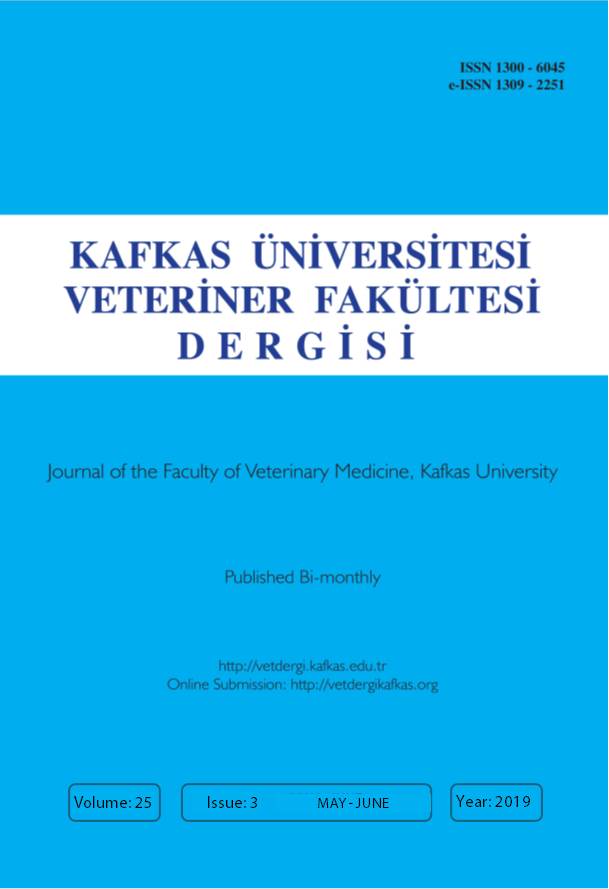
This journal is licensed under a Creative Commons Attribution-NonCommercial 4.0 International License
Kafkas Üniversitesi Veteriner Fakültesi Dergisi
2019 , Vol 25 , Issue 3
Influence of Anticoccidials on Oxidative Stress, Production Performance and Faecal Oocyst Counts in Broiler Chickens Infected with Eimeria Species
1Department for Epizootiology, Clinical Diagnostic, Pathology and DDD, Scientific Veterinary Institute “Novi Sad”, Rumenački Put 20, 21000 Novi Sad, SERBIA2Department of Biology, Faculty of Veterinary Medicine, University of Belgrade, Bulevar Oslobodjenja 18, 11000 Belgrade, SERBIA
3Department of Economics and Statistics, Faculty of Veterinary Medicine, University of Belgrade, Bulevar Oslobodjenja 18, 11000 Belgrade, SERBIA
4Department for Veterinary Medicine, Faculty of Agriculture, University of Novi Sad, Trg Dositeja Obradovića 8, 21000 Novi Sad, SERBIA
5Department of Animal Breeding and Genetics, Institute for Animal Husbandry, Autoput 16, 11080 Zemun-Belgrade, SERBIA DOI : 10.9775/kvfd.2018.21021 The influence of certain anticoccidial drugs on oxidative stress in broiler chickens infected with Eimeria species was assessed. There were two untreated (uninfected and infected), and three groups infected and treated with anticoccidials. The first treated group (Ro) was given robenidine, the 2nd a herbal anticoccidial (Herb) and the 3rd the combination of robenidine and the herbal anticoccidial (Ro+Herb). All infected groups were on day 14 challenged with oral inoculation of oocysts. The activities of catalase (CAT), superoxide dismutase (SOD) and glutathione S-transferase (GST), and the concentration of malondialdehyde (MDA) were estimated in blood taken on days 21 and 40. The oocyst numbers were calculated per gram, and chicken body weight and feed conversion ratio (FCR) measured. The activities of CAT, GST and the level of MDA were significantly lower (P<0.05), whilst the activity of SOD was higher in infected chickens treated with anticoccidials (P<0.05) in comparison to those untreated. The most prominent change in the parameters of oxidative stress was recorded in the Ro+Herb group. In chickens treated with anticoccidials body weight was significantly higher (P<0.05), and the FCR and the oocyst counts significantly lower (P<0.05) than in untreated chickens. Oocyst counts were lower in the Ro and Ro+Herb groups than in the Herb group. Our study demonstrated that both anticoccidial substances exerted antioxidant and anticoccidial effects. Keywords : Broilers, ROS, Coccidia, Robenidine, Herbal anticoccidial










